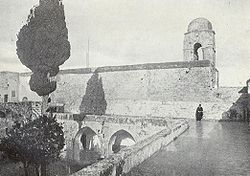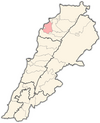


The Balamand Monastery (historically called Belmont, Bellimontis ultra Mare, or Bellus-Mons), is a monastery for the Greek Orthodox Church of Antioch founded in 1157 in Balamand (Belmont), the Crusader County of Tripoli, now in the Koura District, in Northern Lebanon. It was originally started by Cistercian monks and maintained as such until the Mamluk conquest in 1289, then reestablished as monastery by Greek Orthodox monks in 1610, after a poorly documented period of three centuries. [1]
Contents
On the grounds of the monastery has been established the University of Balamand, founded by the Orthodox Patriarch Ignatius IV of Antioch in 1988, though the university claims to be secular and a distinct institution. [2]
